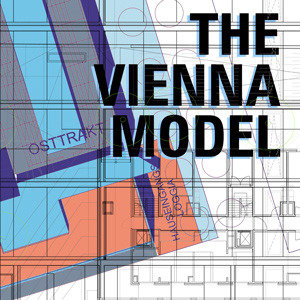The Vienna Model
dal 15/4/2013 al 1/9/2013
Segnalato da
15/4/2013
The Vienna Model
Austrian Cultural Forum, New York
Housing for the 21st Century City. The exhibition will feature 36 case studies in Viennese public housing, accompanied by a responsive series of images of artworks curated by the Austrian collaborative duo Sabine Bitter and Helmut Weber.

Curators: Wolfgang Förster and William Menking
Curatorial Advisors & Exhibition Design: Sabine Bitter and Helmut Weber
This exhibition at the Austrian Cultural Forum New York presents a survey of public housing design in the Austrian capital of Vienna curated by Wolfgang Förster and William Menking. The exhibition will feature 36 case studies in Viennese public housing, accompanied by a responsive series of images of artworks curated by the Austrian collaborative duo Sabine Bitter and Helmut Weber.
The City of Vienna has achieved extraordinary milestones with regard to public housing: today, about 60% of the Viennese population lives in municipally built, owned, or managed housing, and the city is clearly in control of the housing market. This stands in stark contrast to the United States, where, in most cases, the private market is the provider of housing and is often even relied upon to rehabilitate existing neighborhoods and create new communities. Vienna’s housing model contributes to a tangible positive impact; for the past four consecutive years, Vienna topped the Mercer “Quality of Living” survey as the city boasting the world’s highest quality of life in the world, was ranked second in The Economist’s 2012 “World’s Most Livable City”, and number eight in Monocle’s 2012 “World’s Most Livable Cities”.
This successful model dates back to the days of “Red Vienna”, in the early 20th century, when the socialist government took an active interest in designing for the masses. That interest has since evolved into a housing-policy that has produced works by a host of prolific architects and studios over the years, such as those of Josef Hoffmann, Adolf Loos, Richard Neutra, and Margarete Schütte Lihotzky.
The projects featured in The Vienna Model are characteristic for contemporary Viennese public housing trends, some little-known outside the city: The Kabelwerk Estate, which involved turning the grounds of an old electrical cable & wiring factory into an entirely new urban area (completed in 2007, Hermann & Valentiny & Partners, Mascha & Seethaler, Schwalm-Theiss-Gressenbauer, Martin Wurnig, pool Architektur, Werkstatt Wien Spiegelfeld, Holnsteiner & Co.). Other examples include an Inter-ethnic housing complex (Peter Scheinfinger and Partners, 1998-2000), Bike City (königlarch architects, 2005 - 2008), and the Sargfabrik (BKK-2, Johnny Winter, 1996 - 2001), a former coffin manufacturing plant turned into a housing complex: this project was planned by a residents’ group in Vienna’s densely built-up fourteenth district, and has since received international acclaim for its outstanding architecture as well as its social concept of introducing a new communal infrastructure into a low-profile urban area.
The exhibition will highlight these projects for an American audience as it debuts in New York and tours Los Angeles, San Francisco and Washington, D.C., before returning to Vienna from 2013 to 2014.
Bitter & Weber were invited to look at the communal spaces and concepts in this show, and to speculate on how they resonate within artistic and cultural practices - thus expanding the architectural and urban discussion into a cultural discourse. The projects they selected include works by artists Alfredo Jaar, Ulrike Lienbacher, Sofie Thorsen, Bitter & Weber, and Michael Zinganel, as well as urban initiatives and projects such as add-on(2005), and Kunstgastgeber Gemeindebau (2012) which are supported by the Viennese Fund for Public Art, KÖR. Sabine Bitter and Helmut Weber also developed the unique design of the exhibition, which features graphics by Luke Bulman of Thumb.
Graphic Design: Thumb
Head of Communications
Kerstin Schuetz-Mueller Phone: (212) 319 5300 Fax: (212) 644 8660 email: ksm@acfny.org
Opening: April 16, 6–8pm
Austrian Cultural Forum New York (ACFNY)
11 East 52nd Street New York, NY 10022
gallery: daily 10am to 6pm
Free Admission



